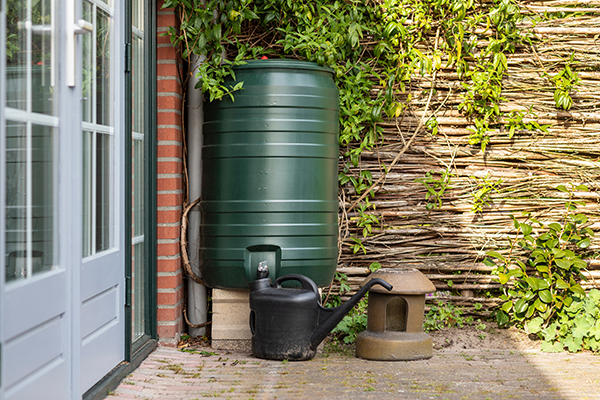Storing an emergency water supply for drinking, cooking and sanitation purposes is a priority on a prepping to-do list for scenarios where water becomes a scarce resource.
Frozen water in an emergency situation is very bad news as the inconvenience of thawing it for use serves as a huge waste of energy.
People who do not have extra or available space inside their houses find cost-effective and efficient solutions for outdoor storage of their emergency water supply.
Some methods for keeping an outdoor emergency stash from freezing may take a bit more planning and can cost more money. But you can expect better results.

Store emergency water in the car
Water should be stored in the passenger compartment, preferably under the seats, instead of the trunk. That way, the vehicle’s heater will also prevent the water from reaching freezing temperature.
If stored in the trunk, water containers should be wrapped in a spare heat-retaining Mylar survival blanket.
Store emergency water underground
First and foremost, the frost line or frost depth – available at the local building department – should be checked. Ideally, emergency water should be stored below that line to protect it from freezing. The next step is to talk to a trusted builder for estimates.
An underground water storage should be able to accommodate airtight containers, such as 55-gallon drums and large PVC pipes capped at both ends. Bigger tanks are better for larger masses of water that take longer to freeze. However, water stored underground may not be easily accessible, so finding a way to access that emergency supply is key. (Related: Long-term water storage: Tips for stockpiling water in 55-gallon drums in your garage.)
Moreover, emergency water supplies should also be protected from looters. This is where precise measurement plays a role, as the correct depth protects emergency water supplies from natural and artificial threats.
Choose above-ground containers that absorb heat
Those unable to store emergency water below ground can alternatively use large steel tanks called rain barrels that help absorb heat from the sun.
Make this method more effective by ensuring the steel tank has maximum exposure to the sun. Painting it with a dark color, preferably black, will also help it absorb more sunlight.
Insulating the tank with materials from a local home improvement store can also help it absorb and retain heat. Foam, spare blankets or old newspapers can also be used as long as they are kept dry. Heat-retaining Mylar or thermal blankets can also be used – putting their longevity into consideration.
Just like underground water storage, larger tanks that can hold more water freeze slower.
Store water in insulated coolers
Emergency water supplies can be stored in soft-sided insulated containers, coolers or water jugs. Such containers come in different sizes and brands, with the more expensive ones being almost indestructible. There are other more budget-friendly brands as well, with choices ultimately depending on location, available space and budget.
One need not go thirsty when water becomes scarce, thanks to a well-stored and well-protected emergency water supply.
Preparedness.news has more tips on how to store water properly.
Watch this video on how you keep your canteens from freezing.

source : Olivia Cook



